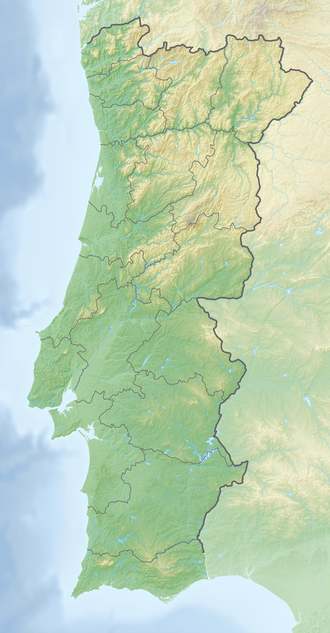
Back Schlacht bei Buçaco German Batalla de Busaco Spanish Bataille de Buçaco French Batalla de Buçaco Galician Battaglia del Buçaco Italian Slaget ved Bussaco NB Bitwa pod Buçaco Polish Batalha do Buçaco Portuguese Битва при Бусаку Russian
This article includes a list of general references, but it lacks sufficient corresponding inline citations. (July 2011) |
| Battle of Bussaco | |||||||
|---|---|---|---|---|---|---|---|
| Part of Peninsular War | |||||||
 Plan of the battle of Bussaco | |||||||
| |||||||
| Belligerents | |||||||
|
|
| ||||||
| Commanders and leaders | |||||||
|
|
| ||||||
| Strength | |||||||
| 32,000[1]–35,765[2] | 45,774[2]–58,000[1] | ||||||
| Casualties and losses | |||||||
| 1,300[3][1]–1,356[2] dead or wounded | 2,456[2]–4,500[3][1] dead or wounded | ||||||
The Battle of Buçaco (pronounced [buˈsaku]) or Bussaco was fought on 27 September 1810 during the Peninsular War in the Portuguese mountain range of Serra do Buçaco, resulting in the defeat of French forces by Lord Wellington's Anglo-Portuguese Army.[4][5]
Having occupied the heights of Bussaco, a 10-mile (16 km) long ridge located at 40°20'40"N, 8°20'15"W, with 25,000 British and the same number of Portuguese, Wellington was attacked five times successively by 65,000 French under Marshal André Masséna. Masséna was uncertain as to the disposition and strength of the opposing forces because Wellington had deployed them on the reverse slope of the ridge, where they could neither be easily seen nor easily softened up with artillery. The actual assaults were made by the corps of Marshal Michel Ney and General of Division (Major General) Jean Reynier, but after much fierce fighting they failed to dislodge the allied forces and were driven off after having lost 4,500 men against 1,250 Anglo-Portuguese casualties. However, Wellington was ultimately forced to withdraw to the Lines of Torres Vedras after his positions were outflanked by Masséna's troops.
- ^ a b c d e f Bodart 1908, p. 420.
- ^ a b c d Clodfelter 2008, p. 165.
- ^ a b Glover 1971, p. 139.
- ^ Ellingham, Fisher & Kenyon 2002, p. 63.
- ^ Wheeler & Opello 2010, p. 63.
© MMXXIII Rich X Search. We shall prevail. All rights reserved. Rich X Search
